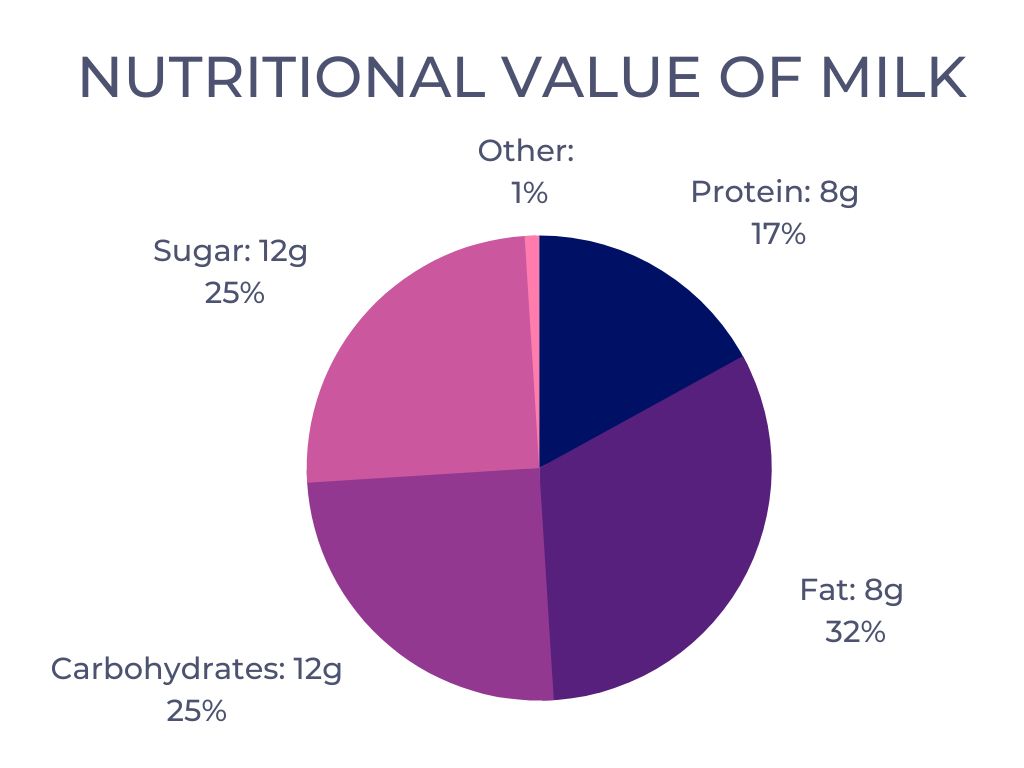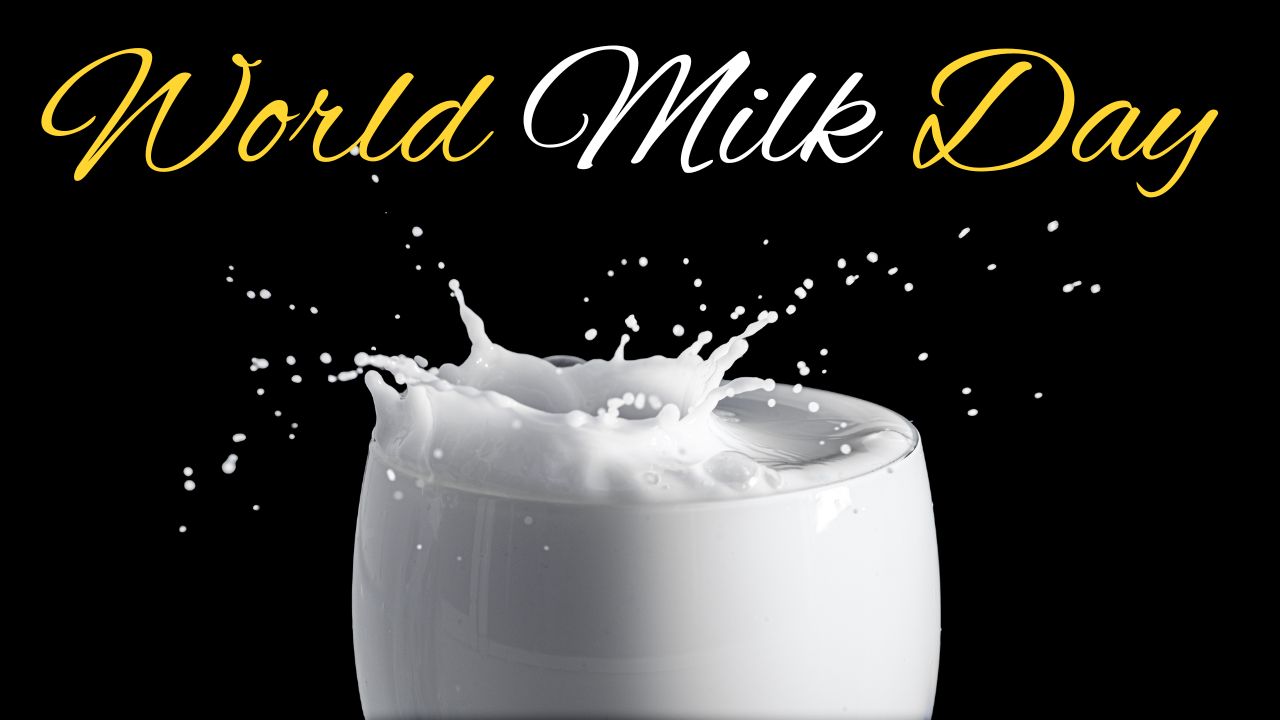World Milk Day is celebrated annually on 1st June that highlights the significance of milk as a global food source and promotes the benefits of milk consumption. Since its inception in 2001, World Milk Day has gained international recognition and serves as a platform to raise awareness about the importance of dairy farming, nutrition, and sustainability. In this article, we will delve into the history, purpose, and various aspects of World Milk Day, exploring its impact on health, the dairy industry, and cultural traditions.
Table of Contents
Importance of World Milk Day
Milk has been an essential part of human diets for centuries, providing vital nutrients and contributing to overall health. World Milk Day, celebrated on June 1st every year, aims to emphasize the nutritional value of milk and its positive impact on individuals and communities worldwide. This annual event is coordinated by the Food and Agriculture Organization of the United Nations (FAO) and the International Dairy Federation (IDF), uniting governments, organizations, and individuals to promote milk consumption and support dairy farmers.
History of World Milk Day
World Milk Day was first established by the FAO and IDF in 2001 to recognize the importance of milk as a global food staple. The initial celebration took place on June 1st, with the objective of educating the public about milk’s significance in daily diets and the importance of dairy farming. Over the years, World Milk Day has gained momentum, with numerous countries participating in the celebrations and organizing various events to highlight the benefits of milk.
World Milk Day 2023 Theme
The theme for World Milk Day 2023 is “Enjoy Dairy”. The World Milk Day Organization announces a new theme and social media campaign for the day every year. This draws attention to Milk Day’s objectives and encourages people to participate in the celebrations
The Purpose of World Milk Day
The primary purpose of World Milk Day is to raise awareness about the nutritional value of milk and its contributions to a healthy lifestyle. It serves as a platform to promote milk consumption, encourages the sustainable production and consumption of milk, and supports dairy farmers worldwide. World Milk Day also aims to foster dialogue and collaboration among governments, organizations, and individuals to address challenges in the dairy industry and develop innovative solutions.
Benefits of Milk
Milk is renowned for its rich nutritional profile, containing essential nutrients such as calcium, protein, vitamins, and minerals. Here are some key benefits of milk consumption:
Nutritional Value
Milk is an excellent source of calcium, which is crucial for maintaining strong bones and teeth. It also provides high-quality protein that supports muscle growth and repair. Additionally, milk contains vitamins like vitamin D, which aids in calcium absorption, and B vitamins, essential for energy production and cognitive function.
Bone Health
The calcium and vitamin D present in milk play a vital role in maintaining healthy bones and preventing conditions like osteoporosis. Regular milk consumption during childhood and adolescence contributes to optimal bone development, reducing the risk of fractures and bone-related disorders later in life.
Muscle Growth and Repair
Protein, one of the main components of milk, is essential for muscle growth, repair, and recovery. Athletes and individuals involved in physical activities often include milk in their diet to support muscle development and enhance performance.
Heart Health
Research suggests that milk consumption, particularly low-fat varieties, may contribute to heart health. The presence of potassium in the milk helps regulate blood pressure, while the combination of nutrients like calcium, magnesium, and phosphorus supports cardiovascular function.
Milk Production and Consumption
Global Milk Production
Milk production varies across different countries, with significant contributions from countries like the United States, India, China, and Brazil. The dairy industry plays a crucial role in the agricultural sector, providing livelihoods for millions of people worldwide. Dairy farming practices and technologies continue to evolve, ensuring efficient production and sustainable practices.
Milk Consumption Patterns
Milk consumption patterns vary globally, influenced by cultural preferences, dietary habits, and socioeconomic factors. While some countries have a long-standing tradition of milk consumption, others may rely more on dairy alternatives or have lower levels of milk consumption. Understanding these patterns helps identify opportunities to promote milk consumption and address challenges in different regions.
Challenges in the Dairy Industry
The dairy industry faces various challenges that require attention and innovative solutions. These challenges include:
Environmental Impact
Dairy farming has an environmental footprint due to greenhouse gas emissions, land use, and water consumption. The industry is increasingly focusing on implementing sustainable practices to reduce its impact, such as optimizing feed efficiency, adopting renewable energy sources, and implementing waste management strategies.
Animal Welfare Concerns
Ensuring the welfare of dairy cows and other animals is crucial for sustainable and ethical farming. The industry is continuously working to improve animal welfare standards, promoting comfortable living conditions, proper nutrition, and responsible handling practices.
Food Safety and Quality
Maintaining high standards of food safety and quality is essential for the dairy industry. Regular testing, proper hygiene practices, and adherence to regulations help ensure that milk and dairy products are safe for consumption.
Sustainable Dairy Practices
The dairy industry is actively embracing sustainable practices to reduce its environmental impact and improve overall sustainability. Some key initiatives include:
Organic Farming
Organic dairy farming aims to minimize the use of synthetic inputs, prioritize animal welfare, and promote biodiversity. Organic dairy products are produced without the use of antibiotics or growth hormones, providing consumers with an alternative choice.
Animal Welfare Standards
Many dairy farms are adopting animal welfare certification programs that ensure proper care, comfort, and treatment of cows. These programs often involve rigorous standards and auditing processes to maintain the highest level of animal welfare.
Reduction of Greenhouse Gas Emissions
Dairy farms are exploring ways to mitigate their greenhouse gas emissions by implementing methane capture systems, improving manure management, and adopting energy-efficient practices. These initiatives contribute to reducing the carbon footprint of the dairy industry.
World Milk Day Celebrations
World Milk Day is celebrated through various events, activities, and campaigns to engage individuals and communities. Some common celebrations include:
Events and Activities
Numerous countries organize events such as milk tastings, farm visits, seminars, and workshops to educate the public about milk production, processing, and its nutritional benefits. These events often involve participation from dairy farmers, nutritionists, educators, and health professionals.
Social Media Campaigns
In the digital age, social media plays a vital role in spreading awareness about World Milk Day. Hashtags and online campaigns encourage individuals to share their milk-related experiences, recipes, and photos, promoting the message of milk’s importance to a global audience.
Promoting Milk Consumption
Various initiatives aim to promote milk consumption, especially among children and communities with limited access to dairy products. These initiatives include:
Education and Awareness Campaigns
Educational campaigns in schools, communities, and healthcare settings play a crucial role in highlighting the benefits of milk consumption. These campaigns focus on nutritional education, debunking myths, and encouraging the inclusion of milk in balanced diets.
Nutritional Programs for Children
In many countries, school feeding programs and nutrition interventions prioritize the provision of milk to children, as it supports growth, development, and cognitive function. These programs aim to improve the nutritional status of children, especially in areas with limited access to diverse food sources.
Nutritional Value of Milk
Milk is a nutrient-rich beverage that provides a variety of essential nutrients. It is an excellent source of vitamins and minerals, including “nutrients of concern,” which are under-consumed by many populations. It provides potassium, B12, calcium and vitamin D, which are lacking in many diets. Milk is also a good source of vitamin A, magnesium, zinc, and thiamine (B1)
Here are the approximate nutritional values for one cup (240 ml) of whole cow’s milk:

World Milk Day serves as a global platform to celebrate the power of milk, raise awareness about its nutritional benefits, and promote sustainable dairy practices. From its humble beginnings, this annual event has grown into a significant movement that brings together individuals, organizations, and governments to support dairy farmers, advocate for milk consumption, and foster positive change in the dairy industry. By recognizing the importance of milk in our diets and the broader context of sustainability, we can contribute to a healthier and more equitable future.
FAQs
Q. Is milk suitable for people with lactose intolerance?
A. Individuals with lactose intolerance may have difficulty digesting milk due to low lactase enzyme levels. However, lactose-free milk and lactase supplements are available to make milk more easily digestible for those individuals.
Q. Can plant-based milk alternatives provide the same nutritional benefits as cow’s milk?
A. While plant-based milk alternatives can offer some nutritional benefits, they may not provide the same nutrient profile as cow’s milk. It’s important to choose fortified options and ensure a balanced diet to meet essential nutrient requirements.
Q. How can I support sustainable dairy practices as a consumer?
A. As a consumer, you can support sustainable dairy practices by choosing products from farms that prioritize animal welfare, embrace environmentally friendly practices, and promote transparency in their production methods.
Q. What are some innovative dairy farming practices to reduce environmental impact?
A. Innovative practices include the use of anaerobic digesters to capture methane from manure, implementing precision farming techniques to optimize resource usage, and exploring renewable energy sources for farm operations.
Q. How can I participate in World Milk Day celebrations?
A. You can participate in World Milk Day celebrations by attending local events, sharing your milk-related experiences on social media using relevant hashtags, and supporting organizations that promote milk consumption and sustainable dairy
farming.
Must Read:
- World Liver Day Significance and Tips for Proper Liver Health.
- Jallianwallah Bagh Massacre Day: Darkest chapters in Indian history
- Jallianwallah Bagh Massacre Day: Darkest chapters in Indian history
- Celebrating World Earth Day: Why Our Planet Deserves Our Attention
- World Autism Awareness Day: Understanding Autism and Promoting Inclusion
- Yoga- When And Where Its Origin And How To MeditAate?
- World Refugee Day: Significance, History, Theme, and facts
- World Wind Energy Day
- World Day Against Child Labour
- World environment day: Why it is celebrated?
- World No Tobacco Daby: Promoting a Smoke-Free Future

